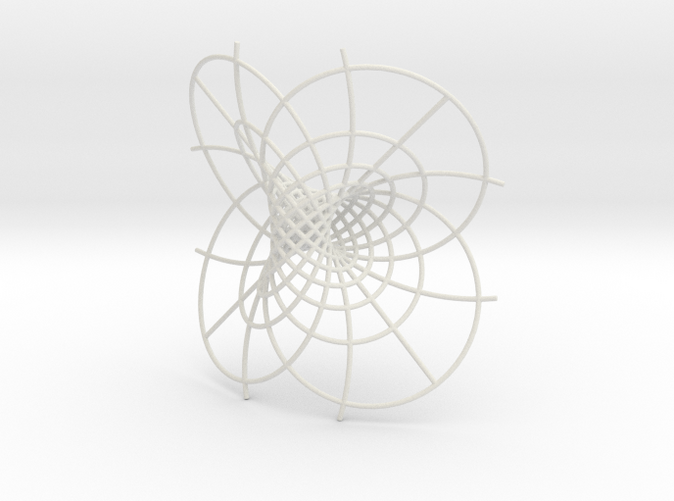To see a wonderful video of the Hopf fibration, go to : http://nilesjohnson.net/hopf.html . The Dimensions video has a great explanation of the fibration:
http://www.dimensions-math.org/Dim_regarder_E.htm Select English, go to the icon at the upper left of the screen, and select Chapter 8. . The easiest way to understand this model may be to see it as a torus surface being turned inside-out through a hole in its side! Here's a condensed explanation of the Hopf fibration: The Hopf fibration maps each point on the surface of a 4 dimensional hypersphere to a circle in 3 dimensional space. These circles, called fibers, do not intersect, and each one is linked with every other fiber. The entire set of fibers fills 3-space. Each fiber also maps to a unique point on the 2-dimensional surface of a sphere in 3-space (like a beachball), called S2 by mathematicians. The set of fibers corresponding to points on a circle on S2 are a set of circles on the surface of a torus in 3-space. These circles are the intersection with the torus of a plane tangent to the torus at two points, and are called Villarceau circles (see Wikipedia). The torus can be seen as a stereographic projection into 3-space of a 4 dimensional torus (See 'Clifford torus 'in Wikipedia). When a point on the circle of points on S2 passes through the north pole, or projection point, the corresponding Villarceau circle appears as straight line (closing at infinity), and the surface of the torus extends to an entire plane in 3-space. (It is turning inside-out.) In the 3D print, two sets of Hopf fibers, mirror images, must be printed so that the circles of each set intersect at right angles those of the mirror set, and support one another. The structure is entirely composed of circles, the linked Villarceau circles on the projected torus. These circles are preserved when stereographically projected and have no thickness, and so do not gain in thickness in the projection. For strength, the larger circles are stopped at the boundary of the largest entire circle printed. This was plotted in Mathematica with the aid of code written by Paul Nylander.
